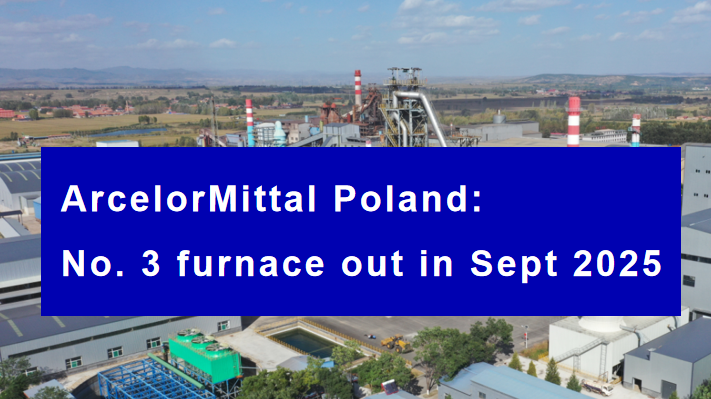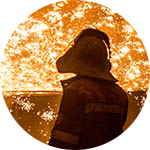Polish blast furnace shutdown—Global Steel Production Cuts 2025
2025-08-05 14:19:04 hits:0

On July 24th, an announcement from ArcelorMittal Poland, a subsidiary of the European steel giant, drew global attention. Due to a persistently deteriorating market environment, the company decided to temporarily shut down the No. 3 blast furnace at its Dąbrowa Górnicza Steel Plant starting from September 2025. This blast furnace, with an annual capacity of 2.2 million tons, will cease operations gradually over several weeks—marking the second shutdown in nearly three years. Previously, it was shut down from October 2022 to January 2023 for similar reasons. This repeated "pause" reflects the severe challenges facing the global steel industry.
Triple Pressures Force European Steel Capacity Adjustments
Wojciech Koszuta, CEO of ArcelorMittal Poland, noted that the shutdown stems from three overwhelming pressures. First is soaring energy costs: additional expenses from the EU Emissions Trading System (ETS) have been continuously adding to the burden, leaving European steelmakers struggling in global competition. Meanwhile, the lack of effective trade protection has led to a surge in low-cost imported steel, further squeezing the market space of local enterprises.
Second, the sustained decline in steel prices has exacerbated operational difficulties. Over the past three months, falling steel prices have made the simultaneous operation of the No. 2 and No. 3 blast furnaces economically unfeasible. Data from the Polish Steel Association is even more striking: imported steel already accounts for 80% of Poland’s apparent consumption, with hot-rolled coil and other plate products reaching a staggering 95% import ratio—highlighting the immense pressure on local steel capacity.
Global Steel Production Cuts Gather Momentum
The shutdown of the Polish blast furnace is not an isolated case. Recently, the trend of production cuts in the global steel industry has accelerated.
In North America, ArcelorMittal Canada announced in June the permanent closure of its Hamilton plant, affecting 153 employees, with operations transferred to its Montreal facility.
In Asia, Hyundai Steel’s Pohang No. 2 Plant has been indefinitely suspended since July due to weak demand for construction steel and aging equipment, with employee salaries reduced to 70%.
In the U.S., steelmaker Cleveland-Cliffs plans to shut down three steel plants this summer, putting approximately 950 workers at risk of unemployment.
As the world’s second-largest steel producer, ArcelorMittal produced 65 million tons of crude steel in 2024. Its global capacity adjustments serve as a key barometer of the industry’s health. From Europe to North America and Asia, spreading production cuts reveal that the global steel industry is grappling with the combined impact of rising energy costs, shifting trade conditions, and changing demand structures.
Export Opportunities in Supply Chain Restructuring
Against the backdrop of global steel capacity adjustments, exporters of pig iron and castings are presented with structural opportunities. On one hand, phased capacity reductions in Europe, North America, and other regions may create supply gaps in local markets—opening space for cost-effective imported pig iron and castings. Poland’s reliance on imports for 80% of its steel consumption further confirms the market potential for high-quality overseas products in such regions.
On the other hand, high energy costs are driving accelerated restructuring of the global steel supply chain, with regions boasting cost advantages and supply chain resilience set to gain greater competitiveness. For pig iron and castings exporters, this is a critical period to optimize customer structures and expand high-value-added markets. Enterprises should focus on regions where demand overflows due to local capacity cuts, offering targeted products that meet environmental standards with significant cost advantages to seize opportunities amid industry transformation.
Blog Author Profile
DAWN | Pig Iron & Castings Procurement Advisor 18 years in the foundry trenches give me an edge: I know how pig iron’s chemistry impacts casting quality and can troubleshoot defects like cracks and porosity. With a 1M MT/year pig iron and 60k MT/year casting output from our in-house factory, plus 200+ verified suppliers on our platform, we offer fast price comparisons. Expect a 24-hour inquiry response—my goal? Not just closing deals, but being your go-to partner in the foundry world.
18 years in the foundry trenches give me an edge: I know how pig iron’s chemistry impacts casting quality and can troubleshoot defects like cracks and porosity. With a 1M MT/year pig iron and 60k MT/year casting output from our in-house factory, plus 200+ verified suppliers on our platform, we offer fast price comparisons. Expect a 24-hour inquiry response—my goal? Not just closing deals, but being your go-to partner in the foundry world.

 en
en  fra
fra  de
de  ru
ru  ara
ara  gle
gle  it
it  jp
jp  kor
kor  th
th  zh
zh 


